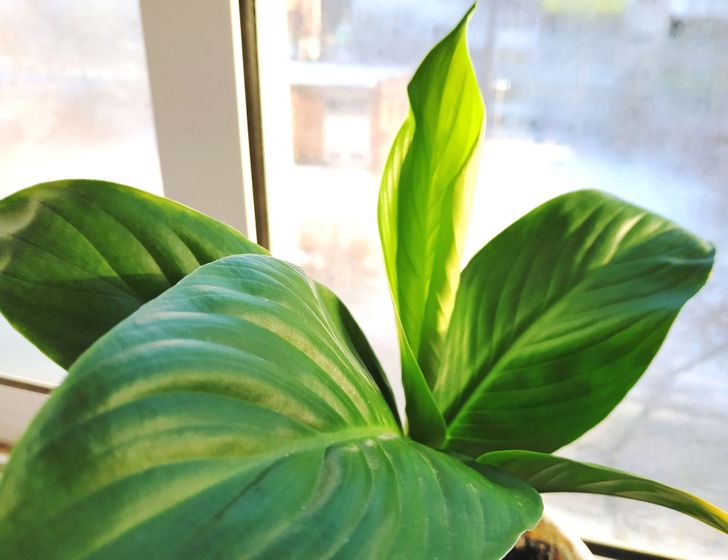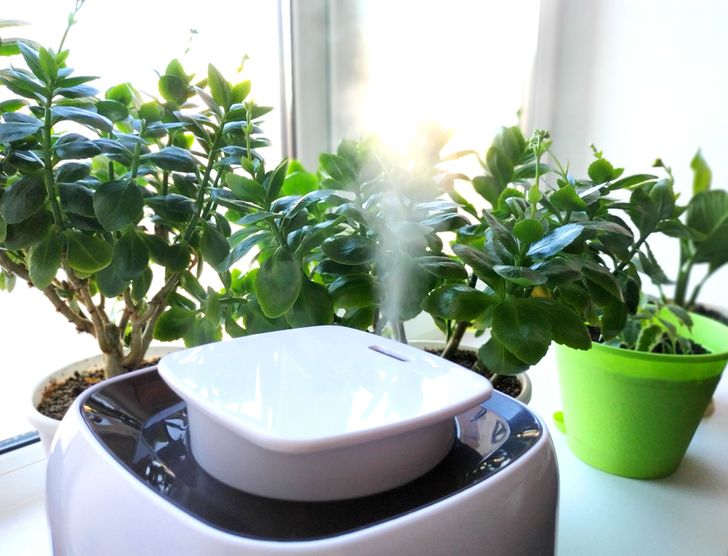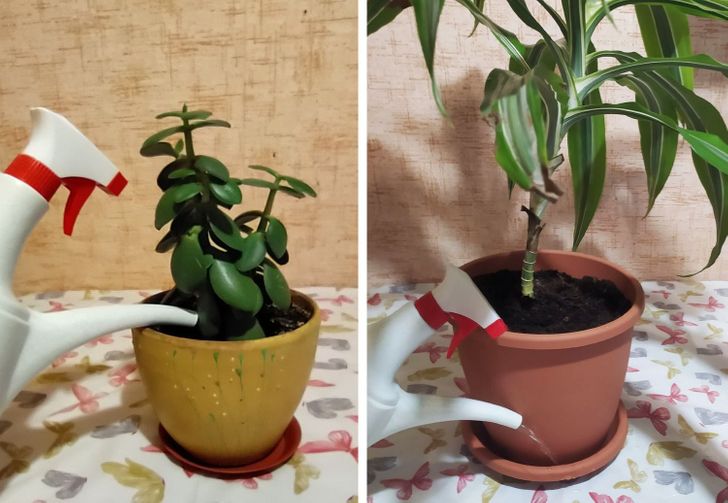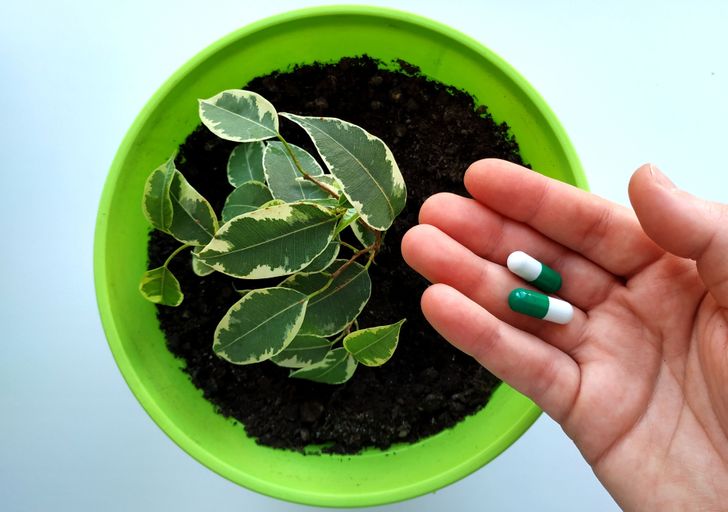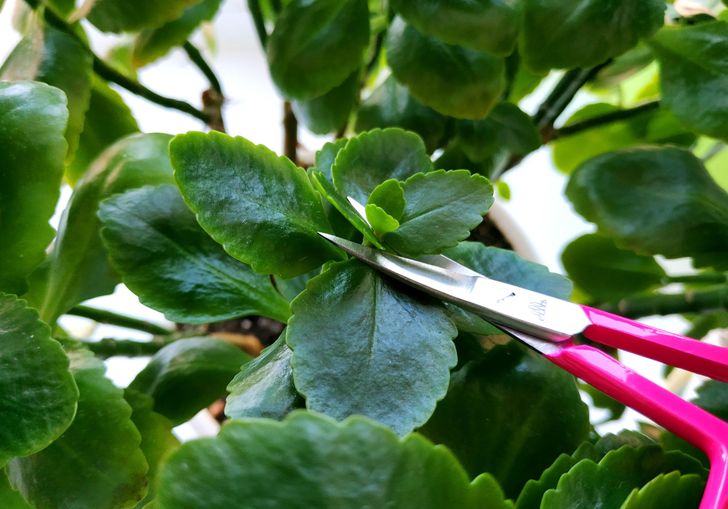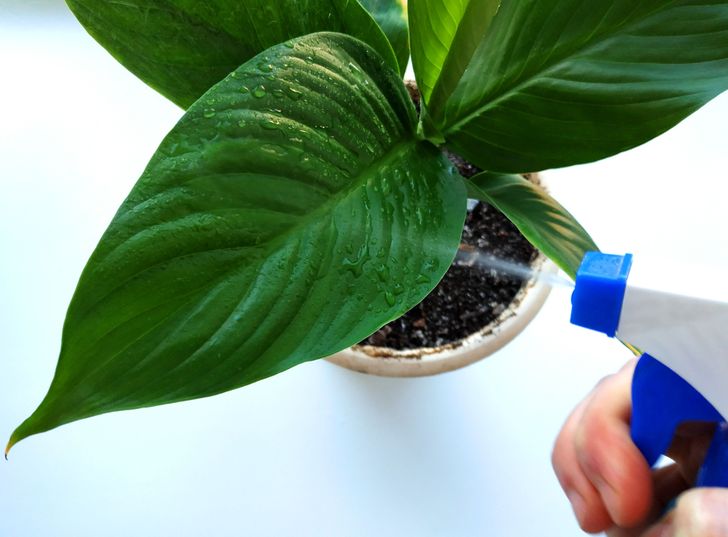How to Care for Houseplants
Not only do houseplants decorate your home and make it more pleasing to the eye, but they also do a very important job. Most plants humidify the air, saturate it with oxygen, and help to improve the general condition of your body. However, to have all these benefits, you have to know how to take care of plants.
5-Minute Crafts will teach you how to care for houseplants to make them flourish for your joy and pleasure.
Location
1. Light: There are 3 factors of lighting that can affect a plant’s growth.
- The amount of light
- The intensity of light
- The spectrum (warm or cool light)
Each type of plant requires a certain ratio of all these factors. Large leafy plants require more light while succulents can stay slightly in the shadows.
If a plant lacks light, you will see certain features:
- The gaps between leaves are bigger than necessary.
- New leaves are smaller than the existing ones.
- Lower leaves turn yellow and fall off.
- The plant doesn’t flower or the flowers are very small.
- New shoots grow long to meet the light.
If there’s too much light, you will see different issues:
- Brown burnt spots will form on the leaves.
- The patterns on the leaves will start losing color.
- The plant will wither, especially at midday.
- The stem will become dry and the leaves will fall off.
Try to move the plant a few times to see how it grows in different conditions. However, don’t do this too often — a plant needs time to adapt to new conditions.
2. Humidity: These are signs that your plants lack humidity in the air.
- Flowering begins slowly, and the flower dies right after the bud opens.
- Leaves’ edges will turn yellow and dry.
- The plant withers.
Usually, this happens in the winter, when the air in living spaces becomes dry due to heating. There are a few ways to help your plant:
- Group the plants so that they can help each other to support humidity. In these hard times, they must stay together.
- Use a humidifier. Place it next to the plants but make sure that water drops don’t form on the leaves.
- Make a water retainer. Put pebbles into the pallet and fill it with water to cover the pebbles. Place the pots on top. This way, excess water will drain and then gradually evaporate, increasing the humidity.
Caring for soil
1. Watering can depend on many factors but there are general rules that you have to follow:
- The bigger the leaves, the more often you have to water the plants.
- During the period of active growth and flowering, the plants require more water. This usually happens in spring and summer.
- Use settled water at room temperature. Pour tap water into the desired container and leave it in a dark place for a day. Try to fill the container right after watering — this way, the water will settle longer.
- Water the plants with a small watering can and try not to erode the soil layer.
- Some flowers require watering from the tray below. This refers to bulbous plants and those with leaves that react negatively to excess moisture, like, azaleas, cyclamens, and violets, for example.
- Watering frequency can be determined by probing the soil. Touch the soil: if it’s dry, it’s time to water it; if not, you need to wait a bit.
Please note: Most plants die, not from drought, but from excessive humidity. So don’t water your plants too much!
2. Fertilizing: Plants need to be fertilized, especially during the period of flowering and active growth, meaning in spring, summer, and autumn. It’s not recommended to fertilize plants in winter. If you want to know exactly when a plant is lacking useful elements, pay attention to the following signs.
- Slow growth
- No flowering
- Pale fallen leaves
- Weak stems
Please note: Don’t fertilize a plant if it’s infected or very weak. It’s also forbidden to do this during the repotting process or within a month after purchasing it.
The composition of fertilizer depends on the type of plant. Some packages say exactly what fertilizer is intended for what plants. The percentage of leading nutrients is also indicated on the packaging (like 10/20/10, for example). Each number corresponds to an active substance, like the ones below.
- Nitrogen gives a plant the strength to form lush green foliage and promotes growth.
- Phosphorus keeps roots strong and healthy and helps plants to flower.
- Potassium makes stems strong and helps a plant to fight disease.
The optimal and universal ratio is 10/10/10. In some cases, a more complex mixture may be required, which includes both mineral and organic fertilizers, like ash, dung, and humus.
3. Repotting: If you don’t repot a plant in time, its roots will become dense and there won’t be enough space for them. Pay attention to whether the roots can be seen in the drainage hole, whether they’re visible on the soil’s surface, or whether the growth of the plant has slowed down. If so, it’s time to look for a new pot.
Caring for leaves
1. Pruning: This procedure will let the plant become bushy and lush. If the stem is soft and thin, you can just pinch the top. Simply grab the young leaves with your fingers and pinch them off. Don’t pull upward to avoid any damage.
In most cases, it’s recommended to use pruners or sharp scissors so that there are no torn edges on the stem that can get infected with fungus. Also, don’t forget to remove dying shoots or yellow, sick leaves.
Pruning should be done during the period of active growth in the spring and summer months.
2. Spraying and cleaning: When there is no dust or dirt, leaves get more sunlight and don’t get infected with bugs.
- Smooth large leaves can be wiped with a soft cloth or sponge dipped in filtered or settled water. Before cleaning the next plant, don’t forget to rinse the cloth to avoid spreading infection.
- Fluffy leaves should be cleaned with a small brush.
- Plants with small leaves, such as ferns, can be sprayed with purified water.
Please note: Some plants should not be sprayed during flowering. Azalea flowers, for instance, don’t like being exposed to water.
